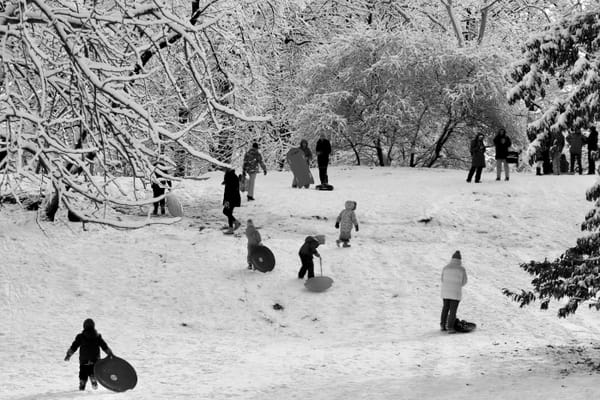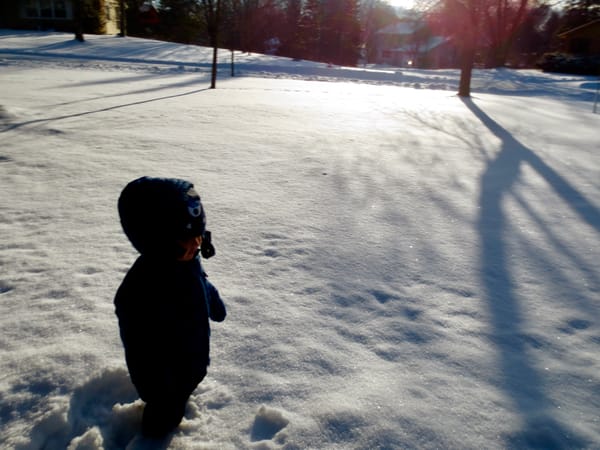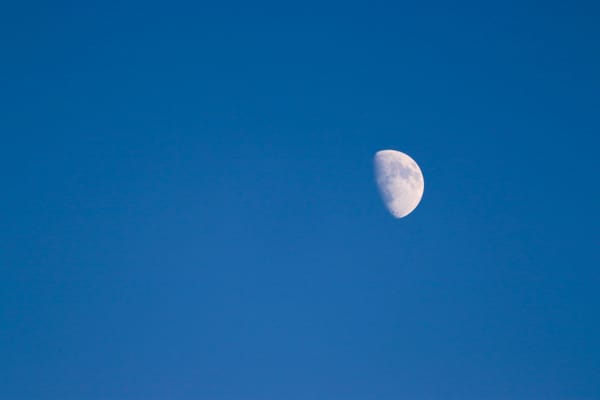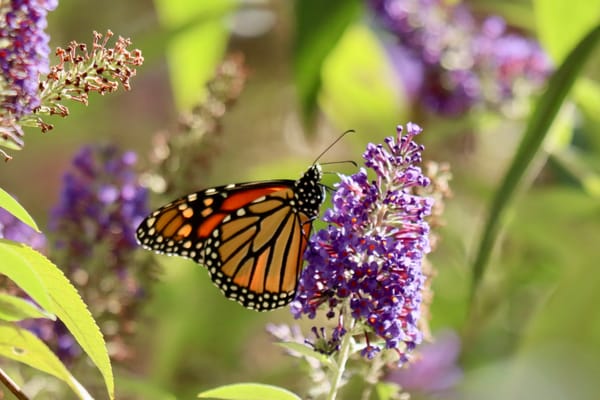A Love Worth Fighting For
Loving the natural world enough to save it...and ourselves

“If what a tree or a bush does is lost on you,
You are surely lost. Stand still. The forest knows
Where you are. You must let it find you.”
~David Wagoner
Over the past several weeks we’ve seen two massively destructive hurricanes batter the southern coast, and experts are warning that we should continue to be on guard for more potentially dangerous storm activity in the coming weeks. Hurricane season has more than a month remaining, and we’ve already seen 13% more accumulated cyclone energy—the metric that calculates the energy generated by storms—than in an entire typical season. As the intensity and frequency of these disasters increases, they are becoming eerily routine. The tragedy still resonates in the immediacy of the emergency, as the devastation flashes across our screens, but we’ve come to anticipate these massive events as we anticipate the change of seasons itself. Wildfires light up the western sky, signaling the beginning of summer, and hurricanes rage as summer fades into fall. We accept these newly powerful rhythms as we accept the changing of the leaves.
When calamity becomes too great, we often feel we have no choice but to be reactive rather than proactive. We can more easily imagine nailing a roof back together than conceive of what would be necessary to calm the storms in the first place. Relief efforts are crucial, of course, but they are also fathomable in a way that preventative measures often are not, especially in the face of such powerful forces. Our minds have evolved to make sense of the world at the scale of our relationships and immediate communities, not in these massive ways, so we respond accordingly.
As the comedian, Marc Maron wryly jokes, “We brought our own bags to the supermarket…Yeah, that’s about it. We brought the bags right when they told us. We brought ‘em, and it just wasn’t enough.”
These small communal gestures are the ones we know how to make sense of, because they are manageable and relational in our day-to-day human rhythms and exchanges. They fit within our intimate existence. The more we expand out from the scale of our daily lives, the harder it is to feel that we have any real control, and so we retreat and wait until we are called to respond to the inevitable aftermath again and again.
But what if the key to being able to think bigger could also be found in intimate, personal relationships? I often think of a story Soshana Meira Friedman shared in an editorial about the kinship that she and her then toddler son developed with the trees in their neighborhood during the pandemic. She wrote,
“Every day we saw, smelled and felt the changes in the trees…As we walked, Abraham and I spoke about the trees as people—and indeed, for the first month of quarantine, they were the only people besides us he got to see up close. In the absence of human friends, greeting the trees with a reverent shake of a lower branch became an obvious choice. ‘Hi, European larch tree,’ Abraham would say in his toddler dialect, grabbing the feathery needles of the drooping branches.”
This anthropomorphizing of nature is often understood as the province of childhood and viewed askance by scientists beyond that realm, because in ascribing human traits to the nonhuman world we can easily make unscientific assumptions. This is a valid concern. Misunderstandings about how animals, in particular, feel and express themselves can sometimes lead us to inadvertently mistreat them. However, the tendency to see emotion, intelligence, personality, and intent outside of humans is also sometimes frowned upon simply because it is received as a threat to the exceptionalism we like to attribute to humans, even though, more and more, we are discovering capacities we assumed were unique to us in other creatures. In clinging to our sense of ourselves as unique and superior, I wonder if we are depriving ourselves of the very kinship that could help us be more proactive in salvaging the vast natural web that supports our own viability.
In Friedman’s son’s emerging relationship with the trees, she explains that a particular cluster of hemlocks took on special importance. He would visit them daily and dubbed their little patch of soil, Frog and Toad’s corner. So, when she had to explain that the hemlocks were sick, he responded as if he was witnessing a friend’s suffering. She said,
“I took my 2-year-old son, Abraham, out under the trees with me one afternoon and showed him the fuzzy white eggs on the undersides of the needles. I explained the trees were sick. ‘He wan’ his Mama,’ Abraham said, reaching for the branch closest to his chubby hand. ‘Mama, I wanna hold his hand.’ Clasping the twig, he looked up into the tree. ’Hemlock tree, you feel better?’ I could scarcely breathe, startled by the sudden clarity that I am teaching my child to love a dying and transforming world, that he will learn to love and lose in the same breath, and that I will learn along with him.”
As heartbreaking as this small moment of understanding and empathy is, I think there is also something hopeful about the depth of this little boy’s sense of connection with the trees. At times this very personal love of nature brings him sadness, and at other times, in his mother’s retelling, joy and peace. Surely, it is also nourishing a long term investment in the natural world that might teach him, in time, to act proactively on its behalf. Just as he grieves the natural world like a friend today, perhaps he will stand up for it with the same depth of feeling tomorrow.
Hope lives in these moments of intimate connection, because it is very difficult to give up hope for something that you love. And this is also the beginning of action, because we are most driven to protect and defend that which we love. We don’t easily rally our most powerful and creative resources out of a sense of obligation or even fear. We do this out of love. As vast in scale as the problems facing us are, I suspect that the wherewithal to solve them still lies in intimacy and personal connection. Our brains are simply not well developed to act on behalf of that which we don’t know and care deeply for.

The solutions, though, can’t be small and intimate, and this is where things get sticky. We tend to respond to these personal connections by acting in small, personal ways—a reusable bag here and a new tree planted there. We need to somehow make the global personal, so that we might comprehend the direness of the need, and then create bolder solutions from there.
Here, too, perhaps we can learn something from the trees. Neil deGrasse Tyson explains in The Hidden Life of Trees,
"When a tree is cut down in the forest, other trees reach out to the victim with their root tips, and send lifesaving sustenance, water, sugar, and other nutrients via the mycelium. This continuous IV drip from neighboring trees can keep the stump alive for decades, and even centuries. And they don't only do it for their own kind. They do it for the trees of other species. Why? Is it because they know that their lives depend on the health of the whole forest? And even on beings very different from themselves? Is it possible that trees can think in longer terms than we do?"
There may be a certain narrowness in viewing cognition and community through such a specifically human lens. Surely there is more diversity of experience in the world than the human mind can comprehend. But starting with connection is always the easiest anchor for care, and care is central to both short and long term action on behalf of anything beyond ourselves. The diversity of living things doesn’t have to negate what we share.
One of the particularly wonderful things about childhood is that children have the imagination to hold all of this at once. Children can connect empathetically with nearly anything—a tree, a stuffed animal, an imaginary friend. Form isn’t an obstacle to love in children. And there is also more capacity for rationality in these extended empathetic connections than we often realize. Despite their magical thinking, children typically know that their imaginary friends are pretend and that their stuffed animals are not really alive. Yet the emotional connection feels very real.
This capacity to empathize broadly and to hold the rational and the imaginative simultaneously without conflict are qualities that fade as we age. But the seeds of those emotional bonds remain. Don’t we feel a tiny flash of that dormant relationship when we find an old, well loved stuffed animal in the back of a closet or an attic box? I suspect the same is true of an early kinship with nature. And our connection to nature doesn’t have to fade, because there are ways to continue to be in deep relationship with nature, even as adults.
We have big problems to solve, and while the response in the aftermath of disasters is essential, we can’t continue to act only in the immediate context of emergencies, as the emergencies grow bigger and more devastating. But, as big as the solutions we need are, I think we have to start by feeling the kind of connection that a little boy felt for a cluster of hemlocks. We have to become connected, both intimately and widely, like the root systems of the trees, grieving together but also breathing together, driven to protect the expansive network of life all around us as if we are protecting our own, because we are.
Environmental writer, Margaret Renkl, says,
“The world will always be beautiful to those who look for beauty. Throats will always catch when the fleeing clouds part fleetingly and the golden moon flashes into existence and then winks out again. Tears will always spring up at the wood thrush singing through the echoing trees, at the wild geese crying as they fly.”
Close attention to the world around us has the power to create the kind of intimate bond with nature that can motivate us to want to protect it, as we would someone we love. Renkl continues with a warning, though. She says,
“A soul touched by the scent of turned soil or sun-warmed grass, a spirit moved by crickets singing in the grass, will spend a lifetime surrounded by wonder even as songbirds drop one by one from the poisoned sky and crickets fall silent in the poisoned grass. Apocalyptic stories always get the apocalypse wrong. The tragedy is not the failed world’s barren ugliness. The tragedy is its clinging beauty even as it fails. Until the very last cricket falls silent, the beauty-besotted will find a reason to love the world.”
Somehow, we must find a way, as children do, to fall in love with the beauty of the world and with the many ways in which we are intimately connected to each part of the world, while also retaining the pragmatism and determination necessary to repair it. I don’t believe it is possible for us to save a world we aren't willing to fall in love with in deeply personal ways. And yet, we also cannot allow ourselves to continue to be observers, who are either so besotted or so overwhelmed that we fail to act.
Surely the fact that the strongest advocates for urgent action are young people is in part due to the fact that they know they will live farther into the future and will experience the harshest consequences of our inaction now. But I wonder if it is also, in part, because they are closer to that early ability to show deep love for that which is not human—not simply to admire the beauty in the world and take solace in it, but to see the suffering of the trees and feel the urge to hold them and fight for them.
Wishing you love and bold courage,
Alicia
If you think someone else in your life might enjoy reading Notes on Hope, please share. It’s always easier to hold onto hope when we’re not doing it alone.





